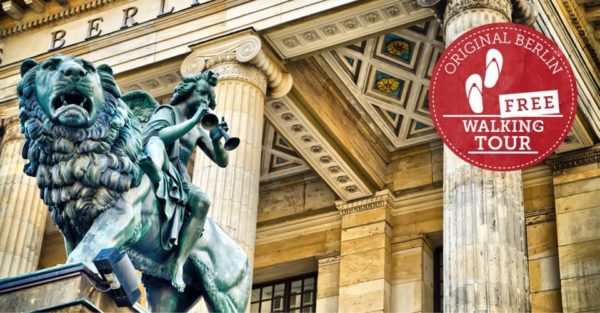Introduction: An Enduring Symbol of History
Of course, the most well know symbol of Cold War is the Berlin Wall – a physical barrier that divided Berlin and the whole Germany. Most of it was torn down in 1989 with the end of the Cold War but pieces as well as important memorials can still be seen today. Definitely, later in this article you will be able to find information about some of the key places, which are associated with the Berlin Wall, where you can steep yourself in history and learn what this dividing line was all about.
East Side Gallery: An Artistic Journey
The East Side Gallery is without any doubt one of the most famous and visually the most impressive parts of the remaining Berlin Wall. Situated in the Friedrichshain district, the 1+ kilometer-long Berlin Wall East Side Gallery is literally painted with over 140 different portraits and patterns by artists from three continents. These lively messages of freedom and solidarity on the East Side Gallery wall make the place very attractive to tourists who are interested in works of art and history.
Some of the things that one can see strolling along the Wall include rather famous pieces such as “The Fraternal Kiss” featuring a kiss between the Soviet leader Leonid Brezhnev and the East Germany counterpart Erich Honecker. Hopes, aspirations and struggles of the time are depicted in each of the paintings. Please ensure you take your camera along so that you can take photos of these incredible murals.
Checkpoint Charlie: A Symbol of the Cold War
Checkpoint Charlie itself which was a checkpoint between east and west between the Berlin wall is now a check point turned into a historic site and museum. It makes it possible to discuss the evolution of the wall and such a number of aspects of the political situation in Cold War time.
You can visit an outdoor exhibition dedicated to the attempts of Eastern Berliners at Checkpoint Charlie. Find out about heroism and imagination as people battled for their freedom Read stories of heroism and imagination as people fought for freedom with their lives on the line. I suggest that you make a stop at the museum located on Friedrichstraße for a full briefing on construction of the wall, life in two Berlins, and the actual knockdown of the Wall.
Tip:
It is advisable to take an organized tour for the purpose of understanding the historical importance of this site. Better information can be provided expounded by well-informed tour guides who may even add personal stories that add to the beauty of the place.
Memorial of the Berlin Wall: A Place of Reflection
The thought provoking place of the Berlin Wall have immense potential of letting the visitor realize the enormity of the division wall. Sited centrally on Bernauer Strasse, this memorial extends for the length of the wall and encompasses the “death strip” and a genuine watchtower.
Stroll through this city walk open air Gallery and you will be able to compare the former Eastside and the Westside. There are human angles given by those behind the wall through sharing of pictures and experiences. Observation decks help to imagine the divided city and think about the challenges people experienced in the past.
Topography of Terror: Unveiling the Dark Past
The Topography of Terror is a very informative and thought-provoking site that unpleasantly brings the Nazis and the subsequent authoritarian East Germany to life. Though not dealing specifically with Berlin’s Wall, it helps to give some background on the development of the political structure that saw the Wall become such a crucial element within.
Standing on the same ground that once housed the Gestapo and SS headquarters this centre has photograph and document exhibits that outline the history of the Nazis and their methods. Learn about the subjugation and scrutiny of people living in the Eastern and Western sectors.
Conclusion: Bridging the Past and Present
Visiting all these places will enable one to see where the Berlin wall stood, appreciate the background of events in the history of Berlin and the striving that the people of Berlin went through to make the change. When visiting places like the East Side Gallery, Checkpoint Charlie, the Memorial of the Berlin Wall, and the Topography of Terror, you will learn about those that were living in that time and get a sense of strength the people had during that time.
Just to recall, the Berlin Wall is also an iconic evidence for the current as well as for the future. Don’t skip this chance to spend time reading about history and accepting the contemporary perspective of the city.
Table of Contents

